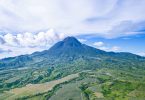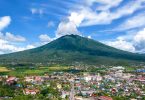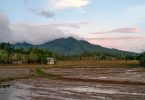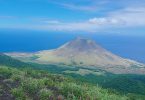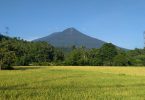Taal Volcano is an active complex volcano renowned for its picturesque crater lake and its tumultuous volcanic history. With its stunning beauty and geological significance, Taal Volcano has become a popular tourist destination and a symbol of the country’s natural heritage.
Throughout its history, the volcano has erupted numerous times, leaving behind a legacy of destruction and renewal. The most catastrophic eruption occurred in 1911, claiming thousands of lives and affecting nearby towns. Since then, Taal has remained restive, with several eruptions recorded in recent decades, including a notable eruption in January 2020 that affected surrounding areas.
One of its striking features is its magnificent crater lake, aptly named Taal Lake. The lake is nestled within the Main Crater and is known for its mesmerizing shades of blue and green. It is one of the few crater lakes in the world, making it a unique geological phenomenon.
Where is Taal Volcano?
Taal Volcano is located in Batangas Province, Philippines. It is in the CALABARZON Region on Luzon Island. Like the Mayon Volcano in Albay, it is part of the Pacific Ring of Fire, an area known for its intense volcanic and seismic activity. It is situated on an island within a lake, known as Taal Lake, which itself lies within a larger caldera, forming a unique geological setting. The volcano consists of multiple overlapping cones and craters, with the Main Crater being the most prominent.
It has become a popular tourist destination, attracting both local and international visitors. The proximity of the volcano to Metro Manila, the country’s capital, makes it easily accessible for day trips and weekend getaways. Tourists used to hike to the volcano’s summit and witness panoramic views of the crater and the surrounding area. But due to the recent volcanic activities, the Philippine Government has declared Taal Volcano to be a permanent danger zone and hiking and other leisure activities are prohibited. For now, tourists can only enjoy this beauty from afar.
In recent years, there has been a greater emphasis on sustainable tourism and conservation efforts to protect the fragile ecosystem surrounding Taal Volcano. The Philippine government, in collaboration with local communities and environmental organizations, has implemented measures to preserve the natural beauty of the area while promoting responsible tourism practices.
Map of Taal Volcano
Photo Gallery
Additional Information
Read more about the Taal Volcano in Batangas. Check out the links below to learn more helpful information about this attraction.



